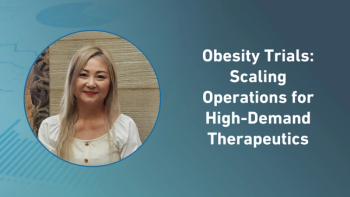
It’s Never Too Early for Cold Chain Planning for Cellular Therapies
Cellular therapies offer potential to improve medicine and fill the needs of patients with few treatment options, though these products must be stored at cryogenic temperatures. Incorporating cold chain logistics into your clinical trial can prove beneficial in making these products available to patients.
Cellular therapies - a category that includes regenerative medicine and immunotherapy - offer the potential to improve the practice of medicine and to fill unmet needs for patients with few or no treatment options. However, your supply chain team may have less experience with these products, which require new technologies, capabilities and resources that may not be available in-house. Moreover, distribution of these products can be challenging, as many must be shipped and stored at cryogenic temperatures.
In addition to strict temperature guidelines, these cellular-based therapies have multi-step supply chains that present a new layer of complexity to scheduling and track and trace. Whereas traditional pharmaceuticals have a linear supply chain model that is less time sensitive, many cellular therapies have a circular supply chain. For example, the manufacture of an autologous therapy requires obtaining cell materials from a patient, sending the materials to processing and manufacturing facilities, and then shipping the finished product back to the same investigator site for patient administration, leaving no room for error in tracking or traceability.
Biopharmaceuticals are incredibly sensitive to the slightest changes in temperature (above the glass point), pressure, humidity or other conditions. For cellular therapies, a very specialized approach that involves both temperature control and scheduling is absolutely vital to maintain the integrity of the product. The distribution of cellular therapies not only requires constant temperature control but is also extremely time-sensitive. As soon as a sample is taken from a patient, cell loss and degradation begin almost immediately, leaving perhaps only 36-48 hours to get the harvested biomaterials to the manufacturer. Any variation in temperature, or interruption in the supply chain, can impact clinical trial results by compromising data integrity and potentially the product’s efficacy and safety.
Many of these programs are global with a centralized manufacturing capacity. Consequently, cold chain transport not only requires a sophisticated understanding of innovative shipping technologies, but continuous monitoring, recording and documentation of the condition of the biologic material (and its packaging) throughout the journey - and, if necessary, proactive intervention to remediate issues that arise during shipment. The distribution process also requires reverse-logistics planning, as the packaging must be returned for cleaning, revalidation and recharging.
The complexities surrounding the manufacture and distribution of cellular therapies have spawned the development of liquid nitrogen dry vapor shippers and other packaging innovations that enable shipment and storage at stable cryogenic temperatures. They have also sped the adoption of sophisticated logistics systems that provide data collection and active/live monitoring capabilities.
It should come as no surprise that agencies such as the International Society for Biological and Environmental Repositories (ISBER), the World Health Organization (WHO), the U.S. Food and Drug Administration (FDA), the U.S. Pharmacopeial Convention (USP), the International Air Transport Association (IATA) and the International Organization for Standardization (ISO) have issued or are reviewing guidelines for the storage and distribution of biological materials. These guidelines focus extensively on quality systems, including documentation of compliance with current Good Laboratory Practice (GLP), Good Manufacturing Practice (GMP) and Good Distribution Practice (GDP), as well as on issues of business continuity and security such as appropriate environmental controls, preventive maintenance, access policies and emergency response planning. Such regulatory scrutiny ups the ante for adoption of logistics management technologies that provide complete chain-of-condition and chain-of-custody tracking.
When fully integrated with clinical software, logistics management systems can coordinate smoothly with patient site visits. These systems can also help optimize workflows, ensuring the seamless transit of biological materials from patient to manufacturer and back to the patient. Even if your clinical trial is in the protocol-planning stage, it’s not too early to incorporate cold chain logistics into the planning process. Your patients - and your data - depend on it.
Tamie Joeckel is Senior Vice President of Client Services and Consulting, Cryoport
Newsletter
Stay current in clinical research with Applied Clinical Trials, providing expert insights, regulatory updates, and practical strategies for successful clinical trial design and execution.




